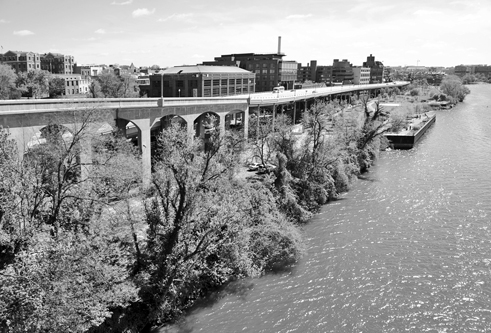Georgetown Vision Plan Nets Community Support

By Graham VyseCurrent Staff Writer
An ambitious 15-year plan to strengthen Georgetown’s business district has won the backing of two key neighborhood organizations.
In the final weeks of 2013, the Georgetown advisory neighborhood commission and the Citizens Association of Georgetown both threw support behind “Georgetown 2028,” a proposal from the Georgetown Business Improvement District.
This report — which the two organizations helped draft — advocates large-scale improvements to Georgetown’s transportation and public space. Among its specific initiatives, the plan calls for the creation of a neighborhood Metro station, a revitalized waterfront along the Potomac River, a pedestrian and bicycle bridge to Theodore Roosevelt Island, and aerial gondolas that would carry 4,000 visitors — and potential customers — across the water from Arlington, Va., every hour.
“ANC 2E is pleased to add its voice to those of others in our community in support of the broad scope and creative thinking embodied in the plan,” the neighborhood commission wrote in its resolution. “We applaud the BID and all who have participated for the inclusiveness and productivity of that process.”
In its own resolution, the citizens association acknowledged the formidable task of accomplishing the proposal’s goals, but sounded an optimistic note: “Recognizing that all significant improvements contemplated by the report will proceed through the ordinary regulatory approval process, CAG strongly endorses the overall objectives.”
“Georgetown 2028” is the product of a year’s worth of community meetings, focus groups and online surveys convened by the Georgetown Business Improvement District. In addition to the neighborhood commission and the citizens association, the group involved key stakeholders such as the National Park Service, the D.C. government and many Georgetown businesses.
At a December press briefing on the plan, business improvement district CEO Joe Sternlieb said transportation is the biggest problem facing Georgetown commerce.
He outlined proposed fixes, starting with an accelerated timeline for construction of a Georgetown Metro station. Sternlieb wants the project completed by 2028, not 2040, as currently planned by the Washington Metropolitan Area Transit Authority.
Although many ideas in Sternlieb’s presentation seemed fairly straightforward — traffic-calming measures, temporary sidewalk extensions, additional streetcars — several were strikingly unusual. For example, the proposal for aerial gondolas was inspired by systems in Portland, Ore., and several international cities, including London.
“Can you imagine a four-minute trip in the air with these spectacular views? It’s pretty amazing,” Sternlieb said. “We’ll be starting a feasibility study in the new year.”
Asked about funding for this and other components of the plan, Sternlieb said it would come from private investment, public-private partnerships and the business improvement district’s own resources.
He pledged to provide specifics about costs by February, but added: “We don’t have any decent ability to estimate yet.” Regardless of the price tag, he said he believes residents will see the projects’ value.
“We think Georgetown is one of the assets that brings people to Washington,” he said. “When people come to Washington, they think about going to the Lincoln Memorial, they think about going to the Capitol, and they think about coming to Georgetown.”
To read the “Georgetown 2028” plan in full, visit georgetowndc.com.
This article appears in the Jan. 1 issue of The Georgetown Current newspaper.
